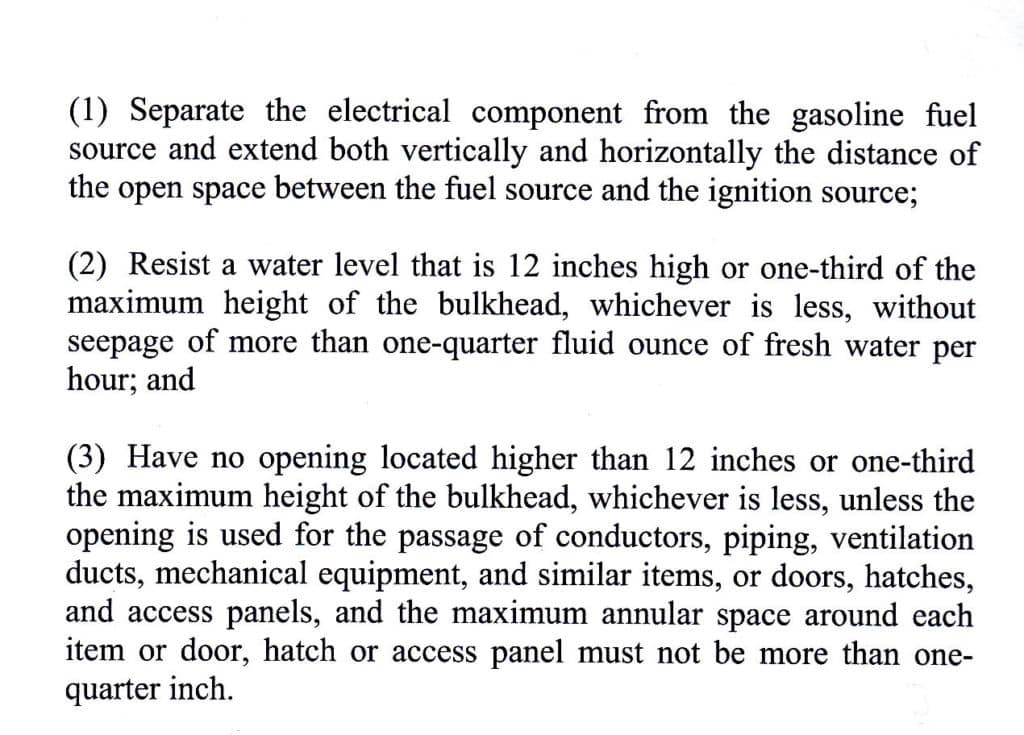
cfr ign protect 2_5718.jpg
I received a query yesterday from a reader asking about a really important issue related to marine electrical system component ratings for ignition protection. I say important because you don’t want your boat to end up looking like the one shown here:

Doug’s question goes like this:
Hi Ed,
I would like to know if any classes of products accepted as inherently ignition protected, not in need of testing / a label. Specifically I am wondering about:
– standard sealed inductive proximity sensors
– Brushless permanent magnet sealed motors (no air blowing on windings)
– sealed stepping motors
– Epoxy encapsulated electro-magnets/ electrical clutches
Basically electrical devices that generate NO sparks. Is there any mention of this in the standards
Thanks, Doug
Doug- This question is a tricky one that is a little bit subject to interpretation of the USCG CFR, under Title 33, Section 183.410, Ignition Protection.
Basically there are several statements made within the above referenced regulation that suggest that all of the devices/components you mention are indeed acceptable. I’ve scanned the applicable text right from the official manual:


My interpretation of this centers on the statement found next to # 2 above. I believe that the components you are referring to will meet that requirement Doug and are therefore properly separated.







